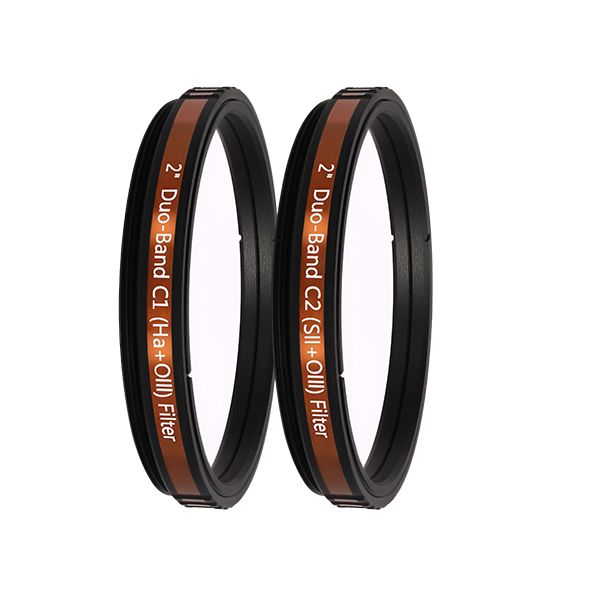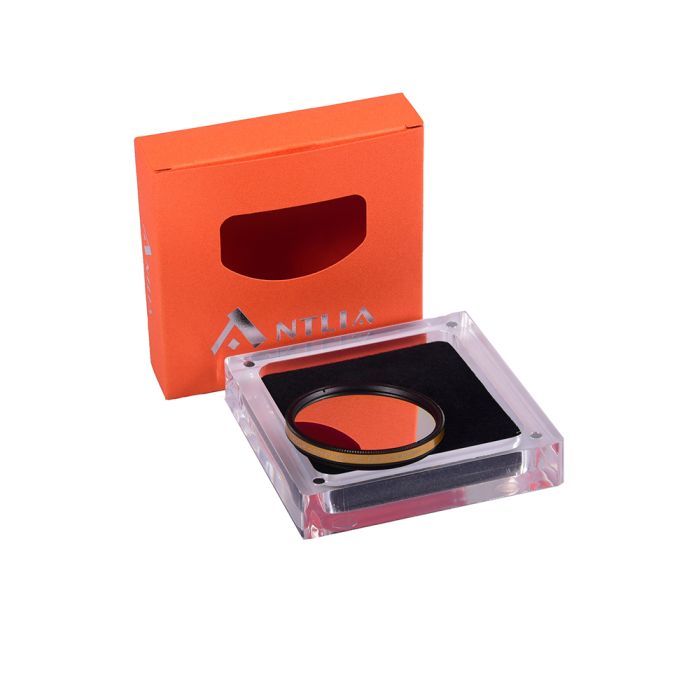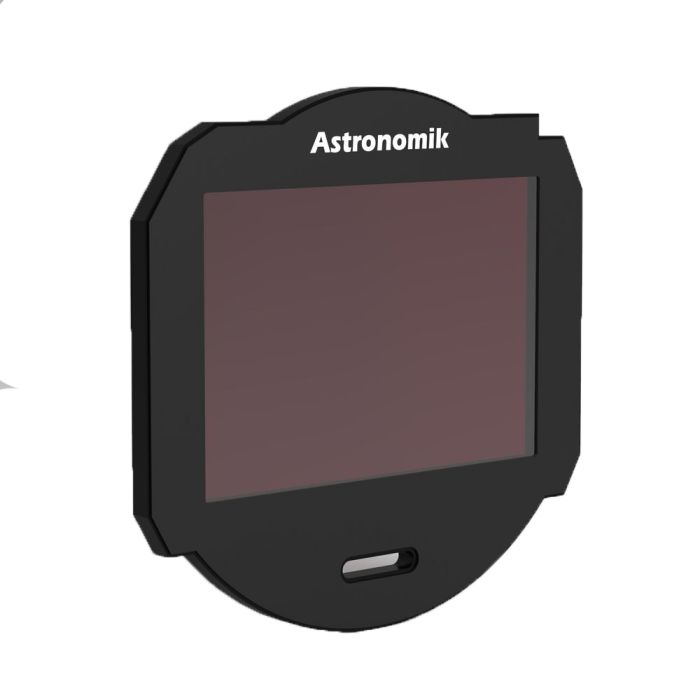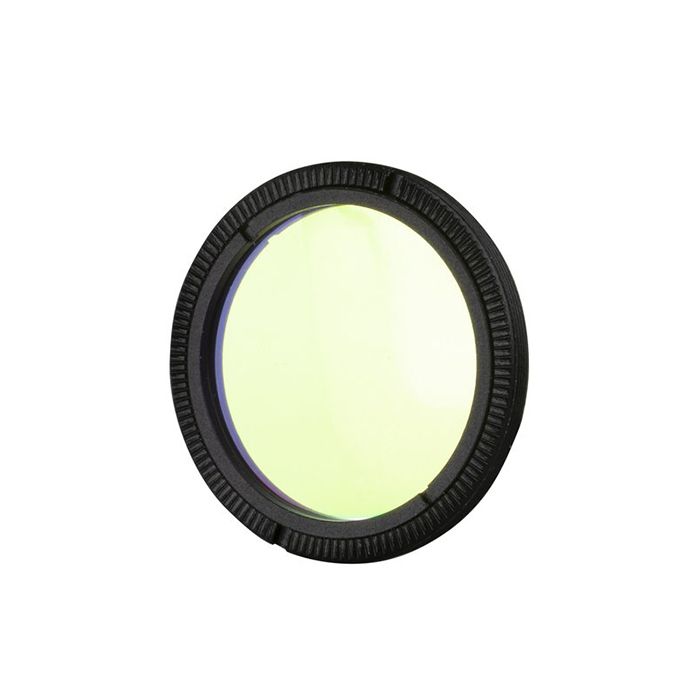tyle="text-align: justify;">Astrophotography uses imaging filters extensively for increasing contrast, lowering light pollution, and isolating specific light wavelengths. They maximize image quality by blocking undesirable spectrum interference and allowing only particular wavelengths to reach the sensor. Especially in areas with light pollution, using a suitable filter set can significantly improve astrophotography results.
Highlighted Products
Featured Product 1
The Askar's Colour Magic Filter Package offers affordable SHO imaging for OSC cameras. It lets users picture in SII, Ha, and OIII ranges. The Ha and OIII bandpass of the C1 and C2 filters combine data for breathtaking photos. By admitting particular wavelengths of light, this creative solution lowers stray light from surrounding places, thereby lessening light pollution.
Featured Product 2
The extra narrowband Antlia 2.5 nm OIII Ultra Filter is made from quartz glass and provides outstanding performance. Its FWHM of 2.5 nm +0.3/-0.1 nm and transmission efficiency of >92% make it perfect for imaging and research in demanding surroundings. The filter has a strong Signal-Noise Ratio for profound sky photography, enhancing signal by 20–30%. It is mounted two inches high.
Featured Product 3
This Astronomik SII 6 nm CCD Clip Filter can filter out visible and infrared light while allowing ionized sulfur light through. It is a full-frame filter made specifically for the Nikon Z-Series cameras. Between f/2.2 and f/1:8, it operates efficiently, reaching a peak transmission of 90% specific at f/2. This product, manufactured in Germany, enhances contrast and is effective against light pollution.
More About This Category
A Guide to Imaging Filters for Astrophotography
Imaging filters are invaluable tools for astrophotography. As light pollution grows, these filters help photographers peer past artificial glare to glimpse astronomical marvels. Whether blocking sodium vapor lamps or shielding against mercury vapor lamps, filters selectively allow light from nebulae and galaxies to permeate cameras while impeding man-made luminosity. For both color and monochrome astrophotography, applying the right filter can transform dull captures into revelations teeming with cosmic particulars. However, filters must be carefully chosen to match imaging conditions, cameras, and targets lest equipment and efforts go for naught or obstruct more than they offer.
How Imaging Filters Help
Light pollution, caused by streetlights and other man-made sources, can degrade the quality of astronomical images by flooding the sky with unwanted brightness. While imaging filters assist by selectively blocking specific wavelengths of this troublesome light, monochrome cameras require different filters to capture true colors. For instance, a standard LRGB filter set separates the luminance, red, green, and blue channels, permitting later combinations through post-processing to yield a full-spectrum image. At the same time, light pollution filters curb wavelengths from the commonly used sodium-vapor and mercury-vapor street lamps. In doing so, they allow the light from stars, galaxies, and nebulae to pass through, helping to produce cleaner and more vivid depictions of the night sky's subtle splendors.
For astronomy aficionados embracing monochrome cameras, which have become preferred due to boosted efficiency and sensitivity, assorted filters are crucial to creating color images. A typical approach involves an LRGB filter suite. These filters isolate the discrete color bands, enabling combination afterward during digital processing to yield a full-colored image. However, street lighting continues flooding the sky with unwanted brightness, worsening the quality of astronomical photographs unless blocked by specially designed pollution-thwarting filters.
Recommended Imaging Filters
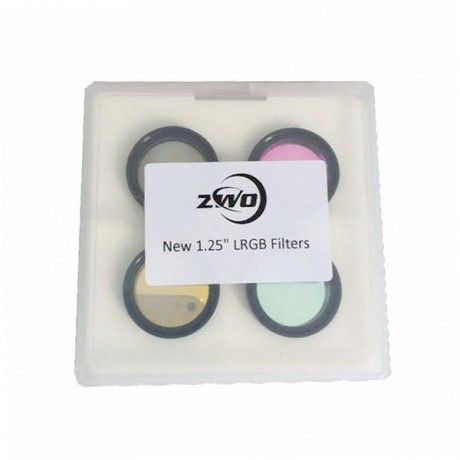
Converting a color camera to monochrome provides improvements, but some miss capturing vivid scenes in natural color. The ZWO LRGB 1.25" Premium Filter Set rectifies this with professional quality color imaging at an affordable price. With over 92% light transmission and precise one-quarter wavelength phase adjustments, colors are rendered authentically. No longer must astrophotographers sacrifice exquisite palettes for increased sensitivity. This filter set seamlessly integrates cutting-edge optics to combine the best of monochrome vulnerabilities with the visual wonder of a polychrome palette. An increased dynamic range can now be appreciated through a colorist's eyes.
Filters for Specialized Telescopes
While the Celestron 8-inch RASA imaging telescope holds immense potential for astrophotography, light pollution often hinders its full capabilities. However, Celestron's Light Pollution Imaging Filter, which is customized for this instrument, alleviates this hindrance. Dropping precisely into the RASA's front lens receptacle, the filter subtracts interfering light from street lamps and natural airglow emanations. This enables the capture of radiant celestial views, revealing their beauty even in areas where significant light pollution would normally hide all but the brightest objects. For RASA owners, a dedicated light-blocking filtration upgrades the telescope to its full optically-enabled performance under any sky, urban or rural, returning vivid perspectives of the cosmos in brilliance the human eye alone could otherwise never detect against the backdrop glow.
Narrowband Filters
For those seeking even greater precision, narrowband filters can be a valuable photographic tool. These specialized filters permit only a narrow slice of the light spectrum, frequently concentrating upon distinct emission lines such as Hydrogen-alpha, Oxygen-III, and Sulfur-II. These filters prove particularly useful for imaging faint nebulae that are difficult to discern. By isolating specific wavelengths and blocking out nearly all ambient light contamination, a slender 3-nanometer narrowband filter facilitates acquiring images laden with remarkable nuance, allowing the faint glow emanating from distant nebulae to shine through vividly. Meanwhile, broader filters capture data with less specificity, collecting an assortment of wavelengths that may obscure subtle features within ethereal astronomical objects. Therefore, for meticulous observational work to explore finely detailed structures within obscure nebulae, narrowband filters can yield beautifully intricate portraits of evanescent emissions otherwise barely perceptible among the general wash of the night sky's glow.
Light pollution and color enhancement present challenges for astrophotographers that filtering solutions can address. General filters diminish stray light, while specialized narrowband technologies leverage specific wavelengths to elevate dim celestial objects. A ZWO LRGB set expertly isolates emissions, extracting concealed nebulosity and intricate galactic forms from the surrounding murk. By comparison, a Celestron RASA filter's blanket approach blunts ambient illumination across the board. For devoted astrophotographers, pairing microscopy-calibre filters with a keen artistic eye can transform even the most light-drenched skies into vast ultramarine canvases, unveiling hidden galactic beauty in exotic hues. Though requiring investment, filters permit photographers to bring splendid celestial vistas normally beyond our naked sight to a revealing scale.

